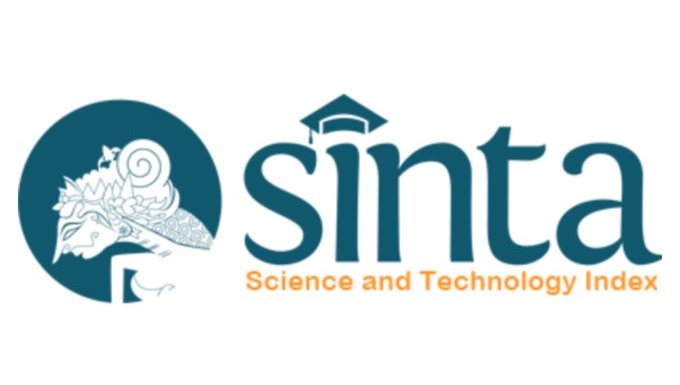Flebotomi Pada Penyakit Jantung Bawaan Dewasa Sianotik
DOI:
https://doi.org/10.55175/cdk.v52i11.1211Kata Kunci:
eritrositosis, flebotomi, hiperviskositas, penyakit jantung bawaan dewasaAbstrak
Penyakit jantung bawaan dewasa merupakan kondisi kardiovaskular yang memerlukan intervensi medis ataupun bedah secara komprehensif. Sianosis pada kondisi ini disebabkan oleh pirau kanan ke kiri, diikuti dengan eritrositosis sekunder yang menyebabkan hiperviskositas. Faktor seperti dehidrasi dan defisiensi zat besi dapat memperburuk gejala hiperviskositas. Salah satu upaya
untuk mengurangi viskositas adalah flebotomi. Prosedur flebotomi harus disertai penggantian volume cairan yang adekuat untuk mencegah stroke akut. Walaupun flebotomi dapat menurunkan massa sel darah merah dan viskositas serum, prosedur ini harus dilakukan secara bijak dan tidak boleh berulang demi menghindari efek samping stroke. Flebotomi berulang tanpa indikasi yang tepat dapat menyebabkan defisiensi besi kronis dan eritrosit mikrositik yang justru meningkatkan risiko komplikasi serebrovaskular.
Indikasi flebotomi meliputi gejala hiperviskositas sedang hingga berat dengan hematokrit minimal 65% tanpa disertai dehidrasi
atau defisiensi zat besi. Manfaat flebotomi harus dipertimbangkan sesuai indikasi yang tepat demi luaran pasien penyakit jantung
bawaan dewasa yang lebih baik.
Unduhan
Referensi
Baumgartner H, de Backer J, Babu-Narayan SV, Budts W, Chessa M, Diller GP, et al. 2020 ESC guidelines for the management of adult congenital heart disease. Eur Heart J. 2021;42(6):563–645. doi: 10.1093/EURHEARTJ/EHAA554.
Puspitasari F, Harimurti GM. Hyperviscosity in cyanotic congenital heart disease. Indones J Cardiol. 2010 ;31(1):41–7. doi: 10.30701/IJC.V31I1.157.
Gangopadhyay D, Roy M, Laha S, Nandi D, Sengupta R, Chattopadhyay A. Hyperviscosity syndrome revisited. Ann Pediatr Cardiol.2022; 15(3): 284. doi: 10.4103/APC.APC_157_21.
Srikanth KK, Lotfollahzadeh S. Phlebotomy. StatPearls [Internet]. Treasure Island (FL): StatPearls Publishing; 2022 Feb 1 [cited 2022 Apr 20]. Available from: https://www.ncbi.nlm.nih.gov/books/NBK574569/
Liu Y, Chen S, Zühlke L, Black GC, Choy MK, Li N, et al. Global birth prevalence of congenital heart defects 1970–2017: updated systematic review and meta-analysis of 260 studies. Int J Epidemiol. 2019;48(2):455–63. doi: 10.1093/IJE/DYZ009.
Garne E. Atrial and ventricular septal defects – epidemiology and spontaneous closure. J Matern Neonatal Med. 2006;19(5):271–6. doi: 10.1080/14767050500433817
Moons P, Bovijn L, Budts W, Belmans A, Gewillig M. Temporal trends in survival to adulthood among patients born with congenital heart disease from 1970 to 1992 in Belgium. Circulation. 2010;122(22):2264–72. doi:10.1161/CIRCULATIONAHA.110.946343.
Van Der Bom T, Bouma BJ, Meijboom FJ, Zwinderman AH, Mulder BJM. The prevalence of adult congenital heart disease, results from a systematic review and evidence based calculation. Am Heart J. 2012;164(4):568–75. doi: 10.1016/J.AHJ.2012.07.023.
Lytzen R, Vejlstrup N, Bjerre J, Petersen OB, Leenskjold S, Dodd JK, et al. Live-born major congenital heart disease in Denmark: incidence, detection rate, and termination of pregnancy rate from 1996 to 2013. JAMA Cardiol 2018;3(9):829. doi:10.1001/JAMACARDIO.2018.2009
Marelli AJ, Mackie AS, Ionescu-Ittu R, Rahme E, Pilote L. Congenital heart disease in the general population: changing prevalence and age distribution. Circulation. 2007;115(2):163–72. doi: 10.1161/CIRCULATIONAHA.106.627224.
Strickland MJ, Riehle-Colarusso TJ, Jacobs JP, Reller MD, Mahle WT, Botto LD, et al. The importance of nomenclature for congenital cardiac disease: implications for research and evaluation. Cardiol Young. 2008;18(S2):92–100. doi: 10.1017/S1047951108002515
Sommer RJ, Hijazi ZM, Rhodes JF. Pathophysiology of congenital heart disease in the adult part I: shunt lesions. Circulation.2008;117(8):1090–9. doi: 10.1161/CIRCULATIONAHA.107.714402
Willim HA, Cristianto, Supit AI. Critical congenital heart disease in newborn: early detection, diagnosis, and management. Biosci Med J Biomed Transl Res. 2021;5(1):107–16. https://doi.org/10.32539/bsm.v5i1.180.
Stout KK, Daniels CJ, Aboulhosn JA, Bozkurt B, Broberg CS, Colman JM, et al. 2018 AHA/ACC guideline for the management of adults with congenital heart disease: a report of the american college of cardiology/american heart association task force on clinical practice guidelines. J Am Coll Cardiol. 2019;73(12):e81–192. doi: 10.1016/J.JACC.2018.08.1029.
Oechslin E. Management of adults with cyanotic congenital heart disease. Heart. 2015;101(6):485–94. doi:0.1136/heartjnl-2012-301685.
Broberg CS, Jayaweera AR, Diller GP, Prasad SK, Thein SL, Bax BE, et al. Seeking optimal relation between oxygen saturation and
hemoglobin concentration in adults with cyanosis from congenital heart disease. Am J Cardiol. 2011;107(4):595–9. doi:10.1016/j.amjcard.2010.10.019.
Rose SS, Shah AA, Hoover DR, Saidi P. Cyanotic congenital heart disease (CCHD) with symptomatic erythrocytosis. J Gen Intern Med.2007; 22(12):1775–7. doi: 10.1007/s11606-007-0356-4.
Kendsersky P, Krasuski RA. Intensive care unit management of the adult with congenital heart disease. Curr Cardiol Rep. 2020;22(11):136. doi:10.1007/s11886-020-01389-9.
Griesman JD, Karahalios DS, Prendergast CJ. Hematologic changes in cyanotic congenital heart disease: a review. Prog Pediatr Cardiol.2020;56:101193. doi: 10.1016/j.ppedcard.2020.101193.
Park M, Salamat M. Park’s the pediatric cardiology handbook-e-book [Internet]. 2021 [cited 2022 Apr 3]. Available from: https://books.google.com/books?hl=id&lr=&id=XXgWEAAAQBAJ&oi=fnd&pg=PP1&dq=park+pediatric+cardiology&ots=Bhurjsll2f&sig=gK3R5zvHM99iUBry4H5OX5GXW4g.
Park M. Pediatric cardiology for practitioners e-book [Internet]. 2014 [cited 2022 Apr 20]. Available from: https://books.google.com/books?hl=id&lr=&id=x7nzAgAAQBAJ&oi=fnd&pg=PP1&dq=Park,+Myung+K.+Mosby,+Elsevier.+Pathophysiology+of+Cyanotic+Congenital+Heart+Defects.+5++ed.2008:+chapter+11.&ots=QryitVJQnK&sig=1vhFWXoVxanLOk0427OwNwxb-fw.
Broberg CS, Bax BE, Okonko DO, Rampling MW, Bayne S, Harries C, et al. Blood viscosity and its relationship to iron deficiency,symptoms, and exercise capacity in adults with cyanotic congenital heart disease. J Am Coll Cardiol. 2006;48(2):356–65. doi:10.1016/j.jacc.2006.03.040.
Hjortshoj CMS, Kempny A, Jensen AS, Sorensen K, Nagy E, Dellborg M, et al. Past and current cause-specific mortality in Eisenmenger syndrome. Eur Heart J. 2017; 38(26):2060–7. doi:10.1093/EURHEARTJ/EHX201.
Benziger CP, Stout K, Zaragoza-Macias E, Bertozzi-Villa A, Flaxman AD. Projected growth of the adult congenital heart disease population in the United States to 2050: an integrative systems modeling approach. Popul Health Metr. 2015;13(1):1–8. doi:10.1186/s12963-015-0063-z.
Broberg CS. Challenges and management issues in adults with cyanotic congenital heart disease. Heart. 2016;102(9):720–5. doi:10.1186/S12963-015-0063-Z/FIGURES/4.
Wood P. The Eisenmenger syndrome: or pulmonary hypertension week reversed central shunt. Am J Cardiol. 1972; 30(2):172–4. doi:10.1136/bmj.2.5099.755.
Jensen AS, Iversen K, Vejlstrup NG, Hansen PB, Sondergaard L. Eisenmengers syndrom. Ugeskr Laeger. 2009;171(15):1270–5. doi:10.5005/jp/books/12702_33.
Jensen AS, Idorn L, Thomsen C, Von Der Recke P, Mortensen J, Sørensen KE, et al. Prevalence of cerebral and pulmonary thrombosis in patients with cyanotic congenital heart disease. Heart. 2015;101(19):1540–6. doi: 10.1136/HEARTJNL-2015-307657.
Sandoval J, Santos LE, Córdova J, Pulido T, Gutiérrez G, Bautista E, et al. Does anticoagulation in Eisenmenger syndrome impact longterm survival? Congenit Heart Dis. 2012; 7(3):268–76. doi:10.1111/J.1747-0803.2012.00633.X.
Kim KH, Oh KY. Clinical applications of therapeutic phlebotomy. J Blood Med. 2016;7:139–44. doi: 10.2147/JBM.S108479.
Holsworth RE, Cho YI, Weidman JJ, Sloop GD, St. Cyr JA. Cardiovascular benefits of phlebotomy: relationship to changes in hemorheological variables. Perfusion. 2014;29(2):102–16. doi:10.1177/0267659113505637.
World Health Organization. WHO guidelines on drawing blood: best practices in phlebotomy [Internet]. 2010 [cited 2022 Apr 20]. Available from: https://apps.who.int/iris/handle/10665/44294.
Assi TB, Baz E. Current applications of therapeutic phlebotomy. Blood Transfus. 2014;12(Suppl 1):s75–83. doi:10.2450/2013.0299-12.
Warekois R, Robinson NR. Phlebotomy: worktext and procedures manual. 2015 [cited 2022 Apr 20]. Available from: https://books.google.com/books?hl=id&lr=&id=t7vMBgAAQBAJ&oi=fnd&pg=PP1&dq=Warekois+MRS,+Robinson+R.+2013.+Venipuncture+Complication+in+Phlebotomy.+3rd&ots=82bYa5j73U&sig=ucEPmf-2Bp4HbLIYGUhS0RKt9OY.
Buowari OY. Complications of venepuncture. Adv Biosci Biotechnol. 2013;4:126–8. doi: 10.4236/abb.2013.41A018.
Medscape. Phlebotomy: background, indications, contraindications [Internet]. 2023 [cited 2022 Apr 20]. Available from: https://emedicine.medscape.com/article/1998221-overview.
Rose SS, Shah AA, Hoover DR, Saidi P. Cyanotic congenital heart disease (CCHD) with symptomatic erythrocytosis. J Gen Intern Med.2007;22(12):1775–7. doi: 10.1007/s11606-007-0356-4.
McMullin MFF, Mead AJ, Ali S, Cargo C, Chen F, Ewing J, et al. A guideline for the management of specific situations in polycythaemiavera and secondary erythrocytosis: a British Society for Haematology guideline. Br J Haematol. 2019;184(2):161–75. doi: 10.1111/BJH.15647.
Arvanitaki A, Gatzoulis MA, Opotowsky AR, Khairy P, Dimopoulos K, Diller GP, et al. Eisenmenger syndrome: JACC State-of-the-Art Review. J Am Coll Cardiol. 2022;79:1183–98 doi: 10.1016/J.JACC.2022.01.022.
Tohgi H, Yamanouchi H, Murakami M, Kameyama M. Importance of the hematocrit as a risk factor in cerebral infarction. Stroke. 1978; 9(4):369–74. doi: 10.1161/01.STR.9.4.369.
Pearson TC. Rheology of the absolute polycythaemias. Baillieres Clin Haematol. 1987;1(3):637–64. doi: 10.1016/S0950-3536(87)80019-7.
Perloff JK, Marelli AJ, Miner PD. Risk of stroke in adults with cyanotic congenital heart disease. Circulation. 1993;87(6):1954–9. doi:10.1161/01.CIR.87.6.1954.
Ammash N, Warnes CA. Cerebrovascular events in adult patients with cyanotic congenital heart disease. J Am Coll Cardiol.1996;28(3):768–72. https://doi.org/10.1016/0735-1097(96)00196-9
Borsani O, Varettoni M, Riccaboni G, Rumi E. Erythrocytosis in congenital heart defects: hints for diagnosis and therapy from a clinical case. Front Med. 2024;11:1419092. doi: 10.3389/FMED.2024.1419092/BIBTEX.
Salimipour H, Mehdizadeh S, Nemati R, Pourbehi MR, Pourbehi GR, Assadi M. Unusual neurologic manifestations of a patient with cyanotic congenital heart disease after phlebotomy. Case Rep Neurol Med. 2015;2015:1–3. doi:10.1155/2015/924862.
Diller GP, Lammers AE, Oechslin E. Treatment of adults with Eisenmenger syndrome—state of the art in the 21st century: a short overview. Cardiovasc Diagn Ther. 2021;11(4):1190. doi: 10.21037/CDT-21-135.
Blanche C, Alonso-Gonzalez R, Uribarri A, Kempny A, Swan L, Price L, et al. Use of intravenous iron in cyanotic patients with congenital heart disease and/or pulmonary hypertension. Int J Cardiol. 2018;267:79–83. doi:10.1016/J.IJCARD.2018.05.062.
Amaru R, Aguilar M, Velarde J, Mamani R, Paton D, Carrasco M. Post-phlebotomy microcytic erythrocytosis: a new clinical entity. Rev Hematol Mex. 2022;23(2):91–8. https://doi.org/10.24245/rev_hematol.v23i2.7835.
Hanzelina, Gunawijaya E, Yantie NPVK, Ariawati K. Mean corpuscular volume and red cell distribution width changes in uncorrected cyanotic congenital heart disease with repeated phlebotomy. Asia Pacific J Paediatr Child Heal. 2023;6:25–32.
Chaudhry HS, Kasarla MR. Microcytic hypochromic anemia [Internet]. 2023 [cited 2024 Dec 17]. Available from: https://www.ncbi.nlm.nih.gov/books/NBK470252/.
Muckenthaler MU, Rivella S, Hentze MW, Galy B. A red carpet for iron metabolism. Cell. 2017;168(3):344–61. doi: 10.1016/j.cell.2016.12.034.
Unduhan
Diterbitkan
Cara Mengutip
Terbitan
Bagian
Lisensi
Hak Cipta (c) 2025 Ngurah Agung Reza Satria Nugraha, I Ketut Susila

Artikel ini berlisensi Creative Commons Attribution-NonCommercial 4.0 International License.





















